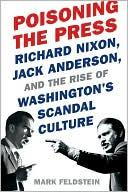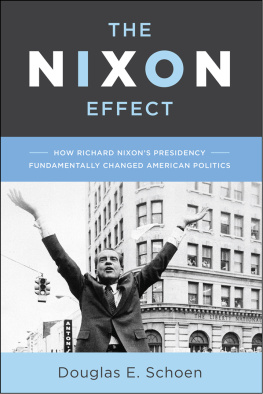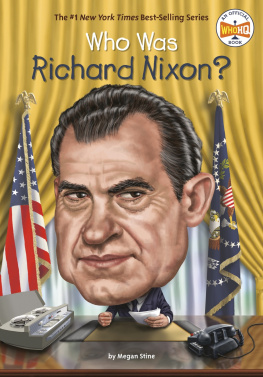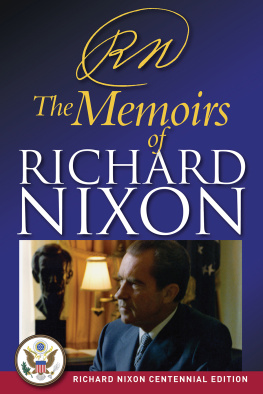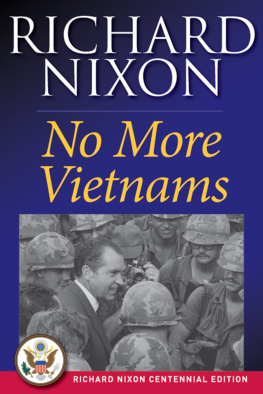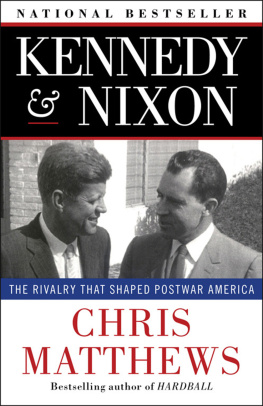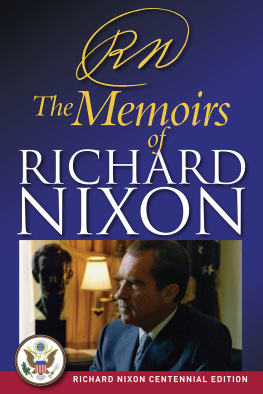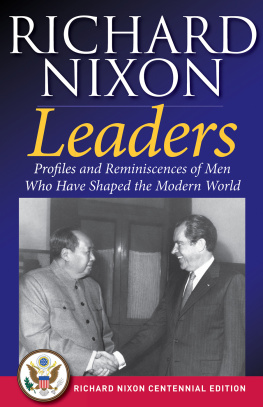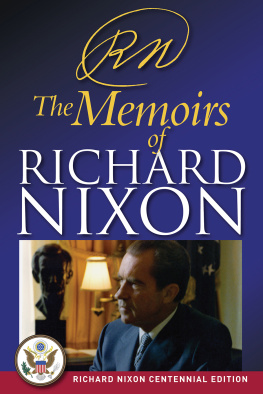POISONING THE PRESS
POISONING THE PRESS
RICHARD NIXON, JACK ANDERSON, AND THE RISE OF WASHINGTONS SCANDAL CULTURE
MARK FELDSTEIN
FARRAR, STRAUS AND GIROUX NEW YORK
Farrar, Straus and Giroux
18 West 18th Street, New York 10011
Copyright 2010 by Mark Feldstein
All rights reserved
Distributed in Canada by D&M Publishers, Inc.
Printed in the United States of America
First edition, 2010
Library of Congress Cataloging-in-Publication Data
Feldstein, Mark Avrom.
Poisoning the press : Richard Nixon, Jack Anderson, and the rise of Washingtons scandal culture / Mark Feldstein. 1st ed.
p. cm.
Includes bibliographical references and index.
ISBN 978-0-374-23530-7
1. Nixon, Richard M. (Richard Milhous), 19131994Relations with journalists. 2. Anderson, Jack, 19222005. 3. Press and politics United StatesHistory20th century. 4. PresidentsUnited StatesPress coverageCase studies. 5. United StatesPolitics and government19691974. 6. Political corruptionUnited StatesHistory 20th century. 7. Political cultureUnited StatesHistory20th century. 8. Political cultureWashington (D.C.)History20th century. 9. PresidentsUnited StatesBiography. 10. JournalistsUnited StatesBiography. I. Title.
E856.F45 2010
973.924092dc22
2010010272
Designed by Jonathan D. Lippincott
www.fsgbooks.com
1 3 5 7 9 10 8 6 4 2
For Beth and Robbie,
my unconditional pride
and everlasting joy
One day well get themwell get them on the ground where we want them. And well stick our heels in, step on them hard, and twist.
Richard Nixon
Nothing produces such exhilaration, zest for daily life, and all-around gratification as a protracted, ugly, bitter-end vendetta that rages for years and exhausts both sides, often bringing one to ruin.
Jack Anderson
CONTENTS
POISONING THE PRESS
PROLOGUE
It seemed an unlikely spot to plan an assassination. After all, the Hay-Adams was once one of Washingtons most venerable old mansions, adorned with plush leather chairs, rich walnut paneling, and ornate oil paintings, located on Lafayette Square directly across the street from the White House. But on a chilly afternoon in March 1972, in one of the most bizarre and overlooked chapters of American political history, the luxury hotel did indeed serve as a launching pad for a murder conspiracy. More surprising still was the target of this assassination scheme, syndicated columnist Jack Anderson, then the most famous investigative reporter in the United States, whose exposs had plagued President Richard Nixon since he had first entered politics more than two decades earlier. Most astonishing of all, the men who plotted to execute the journalist were covert Nixon operatives dispatched after the President himself darkly informed aides that Anderson was a thorn in [his] side and that weve got to do something with this son of a bitch.
The conspirators included former agents of the FBI and CIA who had been trained in a variety of clandestine techniques, including assassinations, and who would later go to prison for their notorious break-in at Democratic Party headquarters in the Watergate building. According to their own testimony, the men weighed various methods of eliminating the columnist: by spiking one of his drinks or his aspirin bottle with a special poison that would go undetected in an autopsy, or by putting LSD on his steering wheel so that he would absorb it through his skin while driving and die in a hallucination-crazed auto crash.
In one sense, the White House plot to poison a newsman was unprecedented. Certainly no other president in American history had ever been suspected of ordering a Mafia-style hit to silence a journalistic critic. Yet it was also an extreme and literal example of a larger conspiracy to contaminate the rest of the media as well, a metaphor for what would become a generation of toxic conflict between the press and the politicians they covered. It was not just that Nixons administration wiretapped journalists, put them on enemies lists, audited their tax returns, censored their newspapers, and moved to revoke their broadcasting licenses. It was, more lastingly, that Nixon and his staff pioneered the modern White House propaganda machine, using mass-market advertising techniques to manipulate its message in ways that all subsequent administrations would be forced to emulate. Nixon simultaneously introduced the notion of liberal media bias even as he launched a host of spinmeisters who assembled a network of conservative news outlets that would drive the political agenda into the twenty-first century. At the same time, Nixon and subsequent presidents effectively bought off news corporations by deregulating them, allowing them to gorge themselves on a noxious diet of sensationalism and trivialities that reaped record profits while debasing public discourse.
How did all of this come to pass? In many ways, the rise of Washingtons modern scandal culture began with Richard Nixon and Jack Anderson, and their blistering twenty-five-year battle symbolized and accelerated the growing conflict between the presidency and the press in the Cold War era. This bitter struggle between the most embattled politician and reviled investigative reporter of their time would lead to bribery and blackmail, forgery and burglary, sexual smears and secret surveillanceas well as the assassination plot. Their story reveals not only how one president sabotaged the press, but also how this rancorous relationship continues to the present day. It was Richard Nixons ultimate revenge.
It was this very lust for revengeNixons obsession with enemiesthat would destroy him in the end. In the Presidents eyes, his antagonists in what he called the Eastern establishment were legion: liberals, activists, intellectuals, members of Congress, the federal bureaucracy. But none was more roundly despised than the news media, and none in the media more than Jack Anderson, a bulldog of a reporter who pounded out his blunt accusations on the green keys of an old brown manual typewriter in an office three blocks from the White House. Although largely forgotten today, Anderson was once the most widely read and feared newsman in the United States, a self-proclaimed Paul Revere of journalism with a confrontational style that matched his beefy physique. Part freedom fighter, part carnival huckster, part righteous rogue, the flamboyant columnist was the last descendant of the crusading muckrakers of the early twentieth century. He held their lonely banner aloft in the conformist decades afterward, when deference to authority characterized American journalism and politics alike.
At his peak, Anderson reached an audience approaching seventy million peoplenearly the entire voting populacein radio and television broadcasts, magazines, newsletters, books, and speeches. But it was his daily 750-word expos, the Washington Merry-Go-Round, that was the primary source of his power; published in nearly one thousand newspapers, it became the longest-running and most popular syndicated column in the nation. Andersons expossacquired by eavesdropping, rifling through garbage, and swiping classified documentssent politicians to prison and led targets to commit suicide. He epitomized everything that Richard Nixon abhorred.
The President had always believed the press was out to get him, and in Anderson he found confirmation of his deepest anxieties. The newsman had a hand in virtually every key slash-and-burn attack on Nixon during his career, from the young congressmans earliest Red-baiting in the 1940s to his financial impropriety in the White House during the 1970s. Even Nixons most intimate psychiatric secrets were fodder for Andersons column. The battle between the two men lasted a generation, triggered by differences of politics and personality, centered on the most inflammatory Washington scandals of their era. In the beginning, Andersons relentless reporting helped plant the first seeds of Nixonian press paranoia. In the end, Andersons disclosures led to criminal convictions of senior presidential advisors and portions of articles of impeachment against the Chief Executive himself. The columnist both exposed and fueled the worst abuses of the Nixon White House, which eventually reached their apogee in the Watergate scandal that ended his presidency in disgrace.
Next page
